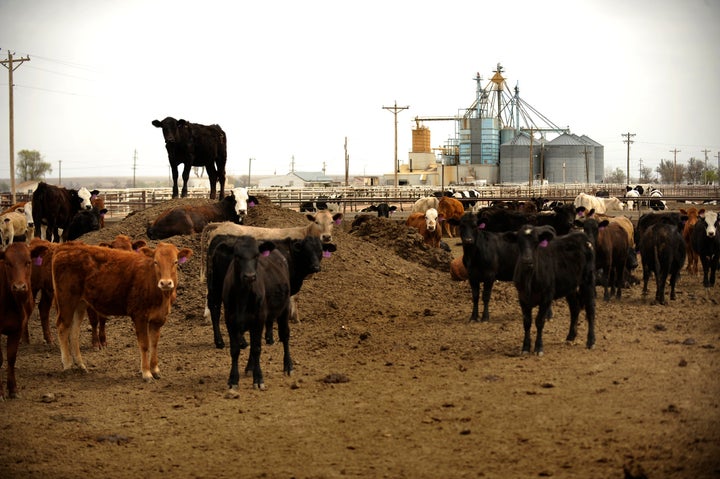
Anaerobic digesters use gasses from cow manure to generate renewable energy.
Who knew cow manure could turn out to be so valuable?
According to an Agence France-Presse story published this month, a family-run dairy farm in northern Indiana is finding a revenue-generating and earth-friendly use for the 70,000 gallons of manure and urine produced daily by its 3,400 cows. Thanks to a biogas recovery system, the farm is transforming that waste into electricity it supplies to a local utility company.
The converted waste supplies enough energy to power 1,000 homes but that’s just one of the perks of using the system -- it also cuts down on the farm’s distinct odor while reducing its methane and carbon dioxide emissions and reducing water pollution, as well. In addition, the system's anaerobic digester helps convert the manure into nutrient-rich fertilizer that can also be sold.
It's a win for all parties involved.
"There's so many [good] things, you forget them all,” Ryan Rogers, who works on the Indiana farm, told AFP.
Here’s how the process of so-called “cow power” generation works, according to the Environmental Protection Agency: The system collects the manure and transports it to the anaerobic digester, typically a covered lagoon or tank. There, the manure is quickly decomposed by bacteria, releasing biogas that is then treated and ready to be used as energy.
Of course, there's a catch -- the systems have a high initial cost and fewer subsidies or grants are currently available to offset that investment in the U.S., so few farms have made the leap.
In the U.S., just under 250 farms currently have operational biogas recovery systems, according to AFP, though about 8,000 across the country are large enough to make such a system economically viable. If that many U.S. farms installed these biogas recovery systems, enough energy would be produced and methane emissions cut to roughly equal the impact of taking 6.5 million cars off the road, according to estimates from the Natural Resources Defense Council.
By comparison, Germany, which just broke a renewable energy record, offers more government support and, according to a 2014 Slate article, has over 5,000 anaerobic digesters currently in operation.
The U.S. is attempting to make up lost ground. Last year, the EPA released the Biogas Opportunities Roadmap which identifies actions that can be taken for the U.S. to reduce its greenhouse gas emissions, including through the increased use of anaerobic digesters. The roadmap also outlined $10 million in new digester research funding.
States are also taking action, as the California Department of Food and Agriculture earlier this year announced $11 million in competitive grant funding from the state’s climate change-fighting, cap-and-trade program to help offset the cost of installing the digesters. The program identified five farms receiving financial support this year.
Also on HuffPost:

